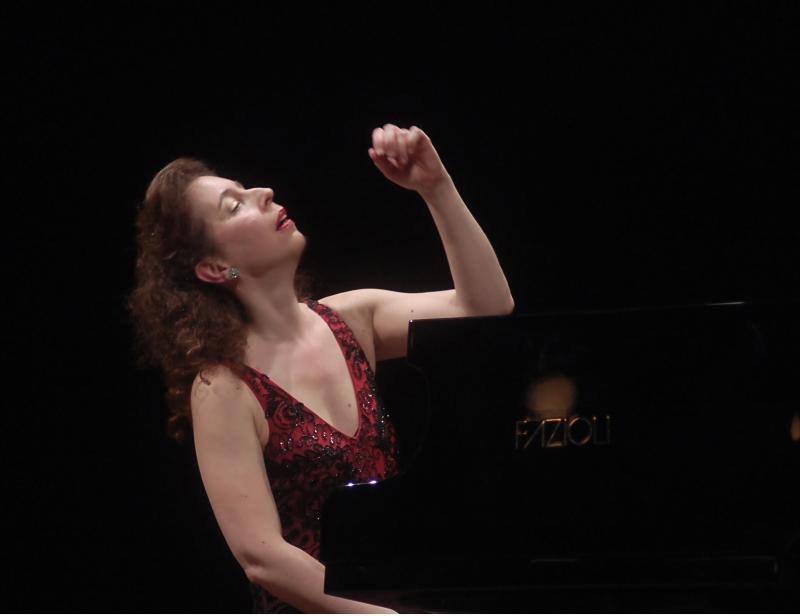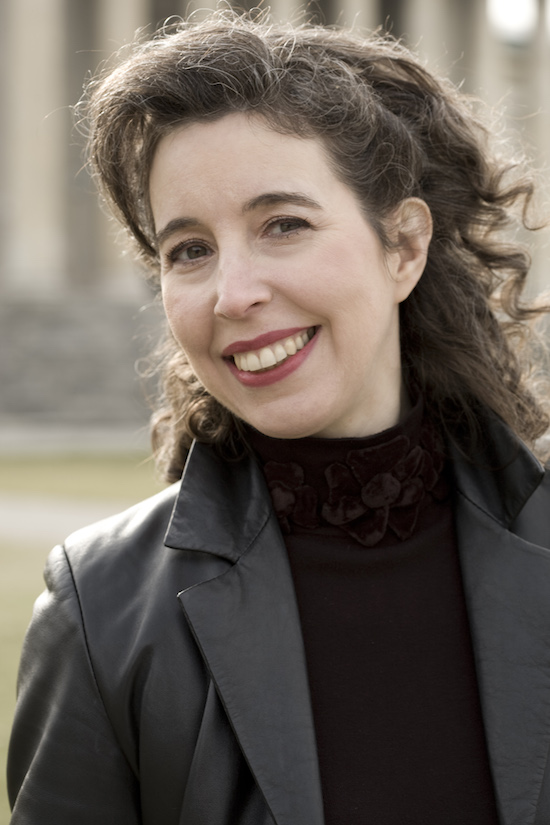Angela Hewitt, Wigmore Hall review – Bach Partitas shine and sing | reviews, news & interviews
Angela Hewitt, Wigmore Hall review – Bach Partitas shine and sing
Angela Hewitt, Wigmore Hall review – Bach Partitas shine and sing
Piano recital of unassuming mastery speaks deep musical truths

On paper this was a fairly austere piece of programming. No variety in composer, genre or style, just four Bach Partitas in a row, works of similar approach, length and technique. And yet in performance, in the hands of Angela Hewitt, there was sufficient variety, not to mention poetry, humanity and wit, to make for a completely satisfying recital.
It is extraordinary that of over a thousand pieces written by J S Bach only about a dozen were published in his lifetime. The pieces he chose as his opus 1 – although published in 1731 when he was in his 40s and already a hugely experienced composer – were the six keyboard Partitas, three of which were on last night’s programme. Bach clearly thought highly of these pieces, and also saw them as a good calling card for his work, although many of the movements would have been beyond even good amateur players, and they lack the immediately attractive tunefulness of, say, the Brandenburg Concertos.
But the sixth Partita, the climax of last night’s concert, is undoubtedly one of Bach’s finest creations. It is structured like all Bach’s suites, including the “French” and “English” sets: multiple dance form movements in the same key, the movements usually in binary form with each half repeated. But the sixth is just a bigger-boned version, everything scaled up, including keyboard virtuosity and musical ambition.
In the 'Burlesca' there was a real sense of fun in the interplay of the two hands
Hewitt, like Bach, set out her stall in the opening “Toccata” in brilliant flourishes and a rhetorical sternness, producing a big but unforced sound from her Fazioli piano. (You know it was a Fazioli because it said “Fazioli” in boastful gold letters on the side.) In other slow movements Hewitt uses a subtle rubato, but in this movement there was a particularly fluid approach to tempo that pointed up the improvisatory style.
The “Corrente” was perhaps the highlight of the whole evening. Its perky syncopations were beautifully captured (with more lightness than in Hewitt’s 1997 Hyperion recording of the Partitas). Flying arpeggios picked out moments of harmonic daring and the whole thing was utterly captivating.
While there was plenty of impressive contrapuntal playing throughout, some of the best moments of the evening came in the slow “Sarabandes”, not least in the sixth Partita. Highly ornamented on the page, Hewitt (pictured below by Maiwolf) allowed the melodic line to sing through the mass of notes, never allowing fussiness to enter her playing. I also enjoyed her use of the pedal to let dissonances hang in the air momentarily before their resolution.
The final “Gigue” can be interpreted in the conventional compound time or played straight, which Hewitt prefers. It does not have the lightness of other suite finales, this is a grand gesture to end a grand work, and Hewitt enjoyed the rare left hand octaves that gave the final moments some real heft.
 Before this, the second half had started with an early, unnumbered Partita, at one time credited to Telemann, which is mainly notable for an “Air pour les trompettes” in which the right hand outlines fanfare-like figuration that sets out a very different musical territory from the rest of the suite.
Before this, the second half had started with an early, unnumbered Partita, at one time credited to Telemann, which is mainly notable for an “Air pour les trompettes” in which the right hand outlines fanfare-like figuration that sets out a very different musical territory from the rest of the suite.
The first half started with the relatively neglected third Partita. Hewitt suggests the neglect is because the opening is less “impressive” than the other Partitas’, but for me it was an excellent palate-cleanser to start the evening. In the “Burlesca”, originally composed for Bach’s second wife Anna Magdalena, there was a real sense of fun in the interplay of the two hands.
There followed the charming fifth Partita, in G major. The “Allemande” showed off Hewitt’s legato; the “Sarabande” was sombre but not muted; the “Tempo di Minuetto” deliberately confuses 3/4 and 6/8 time (something Hewitt could perhaps have brought out more, as Murray Perahia does in his recording). In the brilliantly articulated double-fugue finale, Hewitt untangled the contrapuntal lines deftly.
Angela Hewitt is in the middle of her so-called “Bach Odyssey”, playing all Bach’s keyboard works at the Wigmore Hall, and around the world, over the course of four years. On the evidence of last night’s recital, there are many riches to come, which will be well worth hearing.
rating
Share this article
Subscribe to theartsdesk.com
Thank you for continuing to read our work on theartsdesk.com. For unlimited access to every article in its entirety, including our archive of more than 15,000 pieces, we're asking for £5 per month or £40 per year. We feel it's a very good deal, and hope you do too.
To take a subscription now simply click here.
And if you're looking for that extra gift for a friend or family member, why not treat them to a theartsdesk.com gift subscription?
more Classical music
 Coote, LSO, Tilson Thomas, Barbican review - the triumph of life
A great, ailing conductor rises to Mahler's mightiest challenge
Coote, LSO, Tilson Thomas, Barbican review - the triumph of life
A great, ailing conductor rises to Mahler's mightiest challenge
 Britten Sinfonia, The Marian Consort, Milton Court review - a journey around turbulent spirit Gesualdo
Contemporary homages among the works in this celebration of the Renaissance 'badass'
Britten Sinfonia, The Marian Consort, Milton Court review - a journey around turbulent spirit Gesualdo
Contemporary homages among the works in this celebration of the Renaissance 'badass'
 Classical CDs: Coffee, peppercorns and puppets
A prolific conductor's centenary celebrated, plus Hungarian ballet music and baroque keyboard concertos
Classical CDs: Coffee, peppercorns and puppets
A prolific conductor's centenary celebrated, plus Hungarian ballet music and baroque keyboard concertos
 Sansara, Manchester Collective, Bridgewater Hall, Manchester review - sense of a unique experience
Three world premieres all respond to Feldman’s 'Rothko Chapel'
Sansara, Manchester Collective, Bridgewater Hall, Manchester review - sense of a unique experience
Three world premieres all respond to Feldman’s 'Rothko Chapel'
 Gomyo, National Symphony Orchestra, Kuokman, National Concert Hall, Dublin review - painful brilliance around a heart of darkness
A violinist for all facets of a towering Shostakovich masterpiece
Gomyo, National Symphony Orchestra, Kuokman, National Concert Hall, Dublin review - painful brilliance around a heart of darkness
A violinist for all facets of a towering Shostakovich masterpiece
 Remembering conductor Andrew Davis (1944-2024)
Fellow conductors, singers, instrumentalists and administrators recall a true Mensch
Remembering conductor Andrew Davis (1944-2024)
Fellow conductors, singers, instrumentalists and administrators recall a true Mensch
 Hallé, Wong, Bridgewater Hall, Manchester review - meeting a musical communicator
Drama and emotional power from a new principal conductor
Hallé, Wong, Bridgewater Hall, Manchester review - meeting a musical communicator
Drama and emotional power from a new principal conductor
 Guildhall School Gold Medal 2024, Barbican review - quirky-wonderful programme ending in an award
Ginastera spolights the harp, Nino Rota the double bass in dazzling performances
Guildhall School Gold Medal 2024, Barbican review - quirky-wonderful programme ending in an award
Ginastera spolights the harp, Nino Rota the double bass in dazzling performances
 Queyras, Philharmonia, Suzuki, RFH review - Romantic journeys
Japan's Bach maestro flourishes in fresh fields
Queyras, Philharmonia, Suzuki, RFH review - Romantic journeys
Japan's Bach maestro flourishes in fresh fields
 Classical CDs: Swans, hamlets and bossa nova
A promising young pianist's debut disc, plus Finnish mythology and a trio of neglected British composers
Classical CDs: Swans, hamlets and bossa nova
A promising young pianist's debut disc, plus Finnish mythology and a trio of neglected British composers
 Christian Pierre La Marca, Yaman Okur, St Martin-in-The-Fields review - engagingly subversive pairing falls short
A collaboration between a cellist and a breakdancer doesn't achieve lift off
Christian Pierre La Marca, Yaman Okur, St Martin-in-The-Fields review - engagingly subversive pairing falls short
A collaboration between a cellist and a breakdancer doesn't achieve lift off
 Ridout, Włoszczowska, Crawford, Lai, Posner, Wigmore Hall review - electrifying teamwork
High-voltage Mozart and Schoenberg, blended Brahms, in a fascinating programme
Ridout, Włoszczowska, Crawford, Lai, Posner, Wigmore Hall review - electrifying teamwork
High-voltage Mozart and Schoenberg, blended Brahms, in a fascinating programme

Add comment